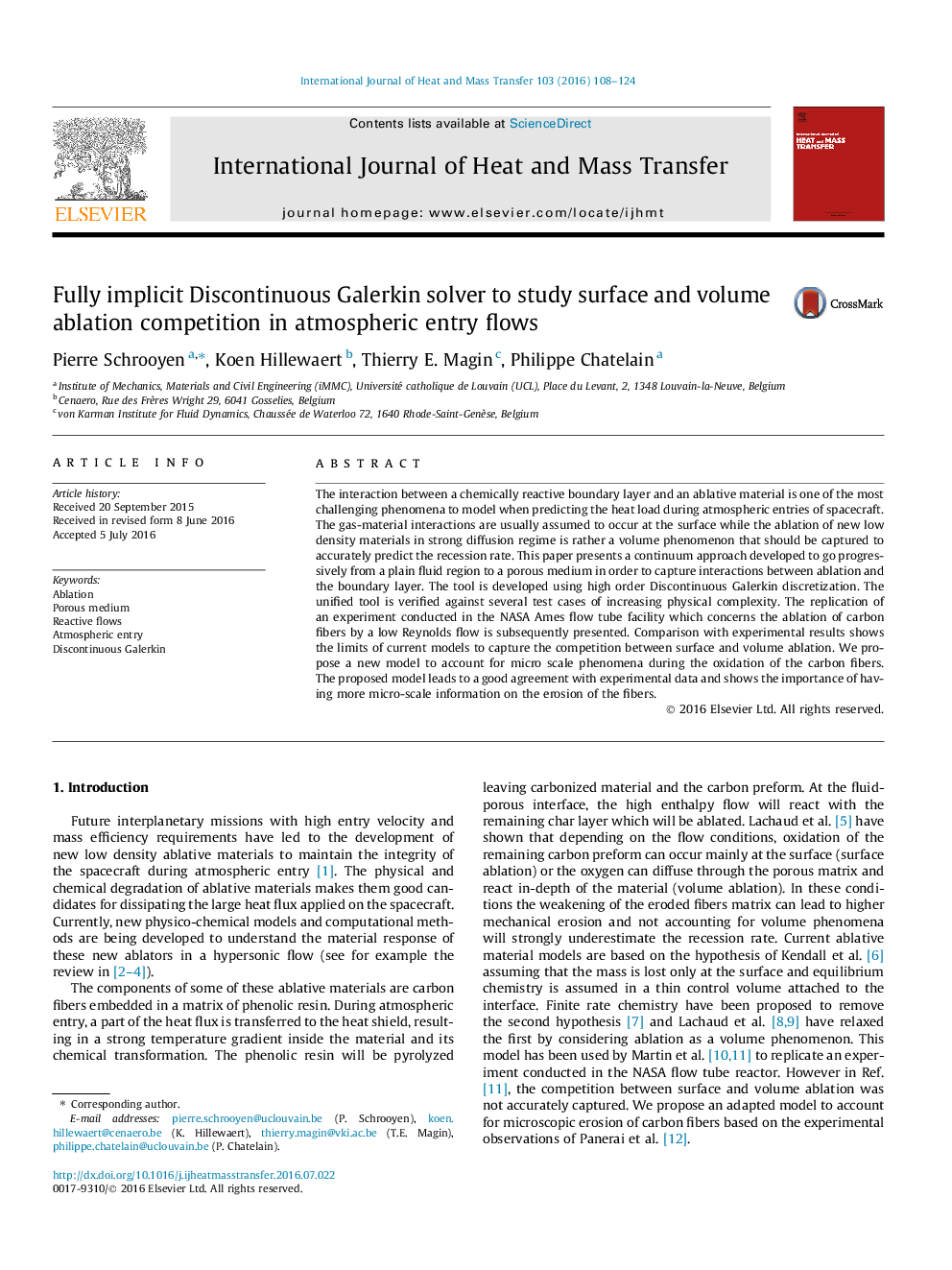| Article ID | Journal | Published Year | Pages | File Type |
|---|---|---|---|---|
| 7054958 | International Journal of Heat and Mass Transfer | 2016 | 17 Pages |
Abstract
The interaction between a chemically reactive boundary layer and an ablative material is one of the most challenging phenomena to model when predicting the heat load during atmospheric entries of spacecraft. The gas-material interactions are usually assumed to occur at the surface while the ablation of new low density materials in strong diffusion regime is rather a volume phenomenon that should be captured to accurately predict the recession rate. This paper presents a continuum approach developed to go progressively from a plain fluid region to a porous medium in order to capture interactions between ablation and the boundary layer. The tool is developed using high order Discontinuous Galerkin discretization. The unified tool is verified against several test cases of increasing physical complexity. The replication of an experiment conducted in the NASA Ames flow tube facility which concerns the ablation of carbon fibers by a low Reynolds flow is subsequently presented. Comparison with experimental results shows the limits of current models to capture the competition between surface and volume ablation. We propose a new model to account for micro scale phenomena during the oxidation of the carbon fibers. The proposed model leads to a good agreement with experimental data and shows the importance of having more micro-scale information on the erosion of the fibers.
Related Topics
Physical Sciences and Engineering
Chemical Engineering
Fluid Flow and Transfer Processes
Authors
Pierre Schrooyen, Koen Hillewaert, Thierry E. Magin, Philippe Chatelain,
